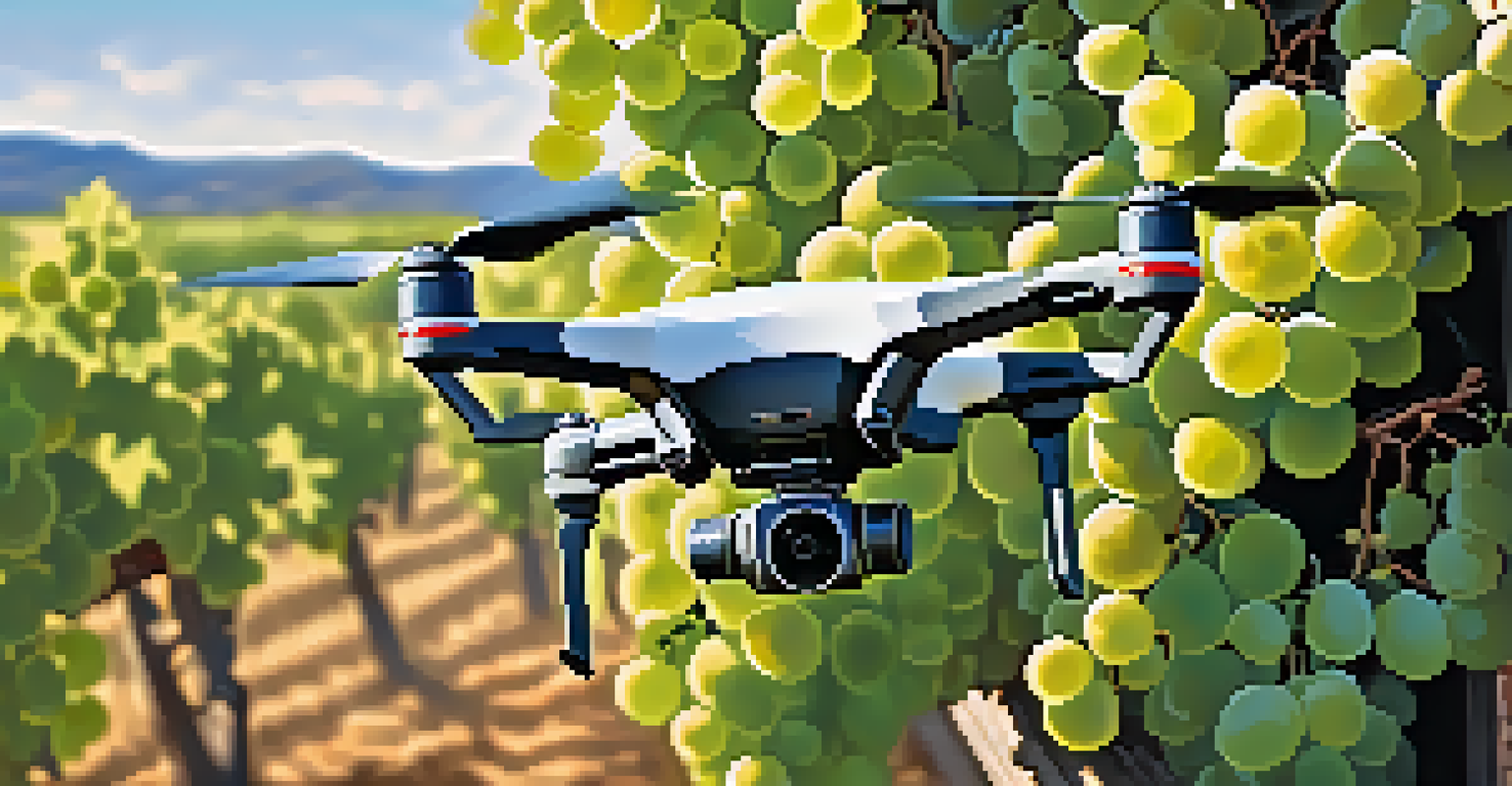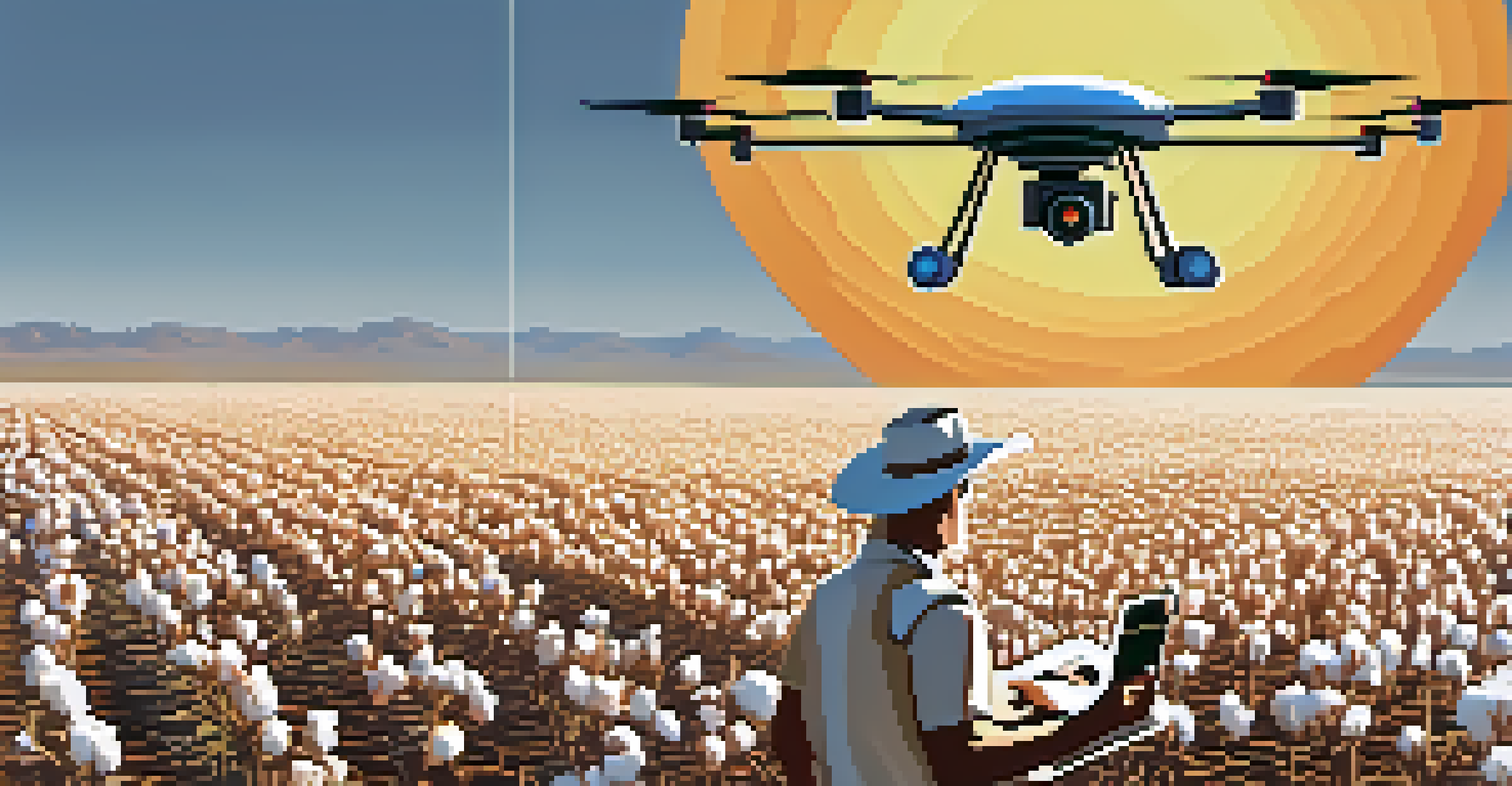Drones in Arizona: A New Age of Crop Monitoring and Care

Introduction to Drones in Agriculture
Drones have emerged as game-changers in the agricultural sector, especially in Arizona. With vast farmlands and varying climates, farmers face unique challenges that drones can help address. These unmanned aerial vehicles (UAVs) offer innovative solutions for monitoring crops and managing resources efficiently.
Technology is best when it brings people together.
Imagine being able to survey an entire field in a matter of minutes, rather than spending hours walking through rows of crops. Drones equipped with advanced cameras and sensors provide farmers with a bird's-eye view, enabling them to spot issues like pest infestations or nutrient deficiencies early on. This not only saves time but also enhances crop yield and quality.
As farmers in Arizona adopt drone technology, they are not just improving their processes—they're also contributing to sustainable farming practices. By utilizing drones, they can optimize their use of water and fertilizers, ultimately leading to more environmentally friendly agricultural methods.
Benefits of Drone Technology for Farmers
The benefits of using drones in agriculture are numerous. One of the most significant advantages is precision farming, which allows farmers to apply resources exactly where they are needed. This targeted approach minimizes waste and maximizes productivity, leading to healthier crops and better profits.

Moreover, drones can collect data on crop health, soil condition, and moisture levels, giving farmers invaluable insights. For instance, a farmer can analyze a thermal image to identify areas of a field that may require additional irrigation. Such data-driven decisions can substantially improve overall farm management.
Drones Enhance Crop Monitoring
Drones provide farmers a bird's-eye view of their fields, enabling quick identification of issues like pest infestations and nutrient deficiencies.
Additionally, drones reduce labor costs by minimizing the need for manual inspections. With fewer people needed to monitor crops, farmers can allocate their workforce to other essential tasks, increasing efficiency and productivity across the board.
Technological Advances in Drone Features
Recent advancements in drone technology have made these tools more accessible and efficient than ever. Features such as high-resolution cameras, multispectral sensors, and GPS tracking systems enable precise monitoring and analysis of agricultural land. These technological enhancements allow farmers to gather more accurate data.
The greatest danger in times of turbulence is not the turbulence; it is to act with yesterday's logic.
For example, multispectral sensors can capture data beyond the visible spectrum, helping farmers assess plant health and identify stress before it becomes a significant issue. This kind of proactive management can lead to healthier crops and better yields, proving that knowledge is power in agriculture.
As technology continues to evolve, the capabilities of drones will only expand. With innovations like AI-driven analytics and improved battery life, the future of drone-assisted agriculture looks promising, making it easier for farmers to adapt to changing conditions.
Challenges of Implementing Drones in Farming
While drones offer many advantages, there are challenges to their implementation in agriculture. One of the primary concerns is the initial investment cost, which can be substantial for small-scale farmers. However, many view this as a long-term investment, as the benefits often outweigh the costs.
Regulatory hurdles can also pose challenges. Farmers must navigate FAA regulations regarding drone flight and airspace usage, which can be confusing and time-consuming. Understanding these regulations is crucial for safe and legal drone operation.
Precision Farming Boosts Efficiency
With the ability to apply resources precisely where needed, drones minimize waste and maximize productivity, resulting in healthier crops.
Additionally, farmers may require training to effectively use drone technology. Familiarizing themselves with the equipment and software is essential to ensure they can harness the full potential of drones for their farming practices.
Real-World Examples of Drone Use in Arizona
Many Arizona farmers are already reaping the benefits of drone technology in their operations. For instance, a local vineyard has successfully utilized drones to monitor grape health, allowing them to adjust irrigation and pest control measures in real time. This approach has led to increased yields and improved grape quality.
Similarly, a large cotton farm in Arizona has implemented drone surveillance to detect early signs of disease. By identifying problem areas quickly, the farm can apply targeted treatments, reducing chemical usage and enhancing overall crop health.
These success stories serve as powerful examples of how drones are changing the landscape of agriculture in Arizona. As more farmers adopt this technology, we can expect to see even greater innovations in the industry.
Future of Drone Farming in Arizona
The future of drone farming in Arizona looks bright, with ongoing advancements promising to further enhance agricultural productivity. As technology continues to evolve, farmers will have access to even more sophisticated tools for monitoring and managing their crops. This will likely lead to increased adoption of drones across various agricultural sectors.
Moreover, as sustainability becomes an even greater focus, drones will play a key role in helping farmers reduce their environmental footprint. By optimizing resource use and minimizing waste, drones contribute to a more sustainable agricultural model.
Future Innovations in Drone Tech
Advancements in drone technology, including AI-driven analytics, promise to further enhance agricultural productivity and sustainability.
As we look ahead, the integration of drones into farming practices will not only boost productivity but also empower farmers to make informed decisions that benefit both their businesses and the environment.
Conclusion: Embracing the Drone Revolution
In summary, drones are revolutionizing crop monitoring and care in Arizona, offering farmers innovative solutions to age-old challenges. With their ability to provide real-time data and insights, drones enable more efficient farming practices that can lead to better yields and a reduced environmental impact.
As more farmers embrace this technology, the agricultural landscape in Arizona will continue to evolve. By leveraging the power of drones, farmers can enhance their operations, making informed decisions that promote sustainability and profitability.

The drone revolution in agriculture is not just a trend; it's a transformative movement that holds the potential to reshape farming for the better. As we move forward, the collaboration between technology and agriculture promises to create a brighter, more sustainable future for farmers in Arizona and beyond.